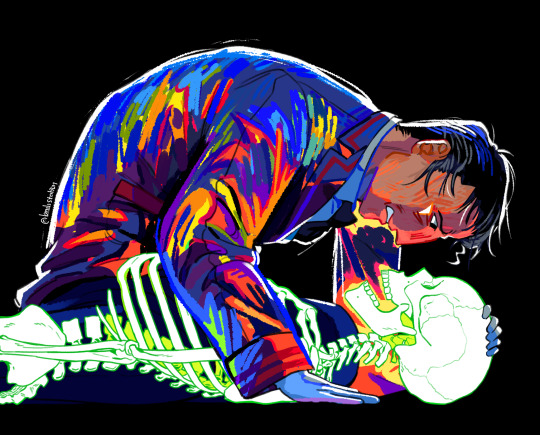Text
91K notes
·
View notes
Text
10K notes
·
View notes
Text







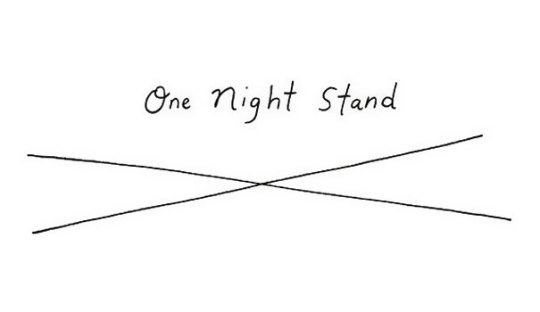


babe are u okay ur crying about closeness lines over time by olivia de recat again
105K notes
·
View notes
Text
Horses: Since There Seems To Be A Knowledge Gap
I'm going to go ahead and preface this with: I comment pretty regularly on clips and photos featuring horses and horseback riding, often answering questions or providing explanations for how or why certain things are done. I was a stable hand and barrel racer growing up, and during my 11 year tenure on tumblr, Professional Horse Commentary is a very niche, yet very necessary, subject that needs filling. Here are some of the literary and creative gaps I've noticed in well meaning (and very good!) creators trying to portray horses and riding realistically that... well, most of you don't seem to even be aware of, because you wouldn't know unless you worked with horses directly!
Some Of The Most Common Horse + Riding Mistakes I See:
-Anybody can ride any horse if you hold on tight enough/have ridden once before.
Nope. No, no, no, no, aaaaaaaand, no. Horseback riding has, historically, been treated as a life skill taught from surprisingly young ages. It wasn't unusual in the pre-vehicular eras to start teaching children as young as 4 to begin to ride, because horses don't come with airbags, and every horse is different. For most adults, it can take months or years of regular lessons to learn to ride well in the saddle, and that's just riding; not working or practicing a sport.
Furthermore, horses often reject riders they don't know. Unless a horse has been trained like a teaching horse, which is taught to tolerate riders of all skill and experience levels, it will take extreme issue with having some random person try to climb on their back. Royalty, nobility, and the knighted classes are commonly associated with the "having a favorite special horse" trope, because it's true! Just like you can have a particularly special bond with a pet or service animal that verges on parental, the same can apply with horses. Happy horses love their owners/riders, and will straight-up do their best to murder anyone that tries to ride them without permission.
-Horses are stupid/have no personality.
There isn't a more dangerous assumption to make than assuming a horse is stupid. Every horse has a unique personality, with traits that can be consistent between breeds (again, like cat and dog breeds often have distinct behavior traits associated with them), but those traits manifest differently from animal to animal.
My mother had an Arabian horse, Zipper, that hated being kicked as a signal to gallop. One day, her mom and stepdad had a particularly unpleasant visitor; an older gentleman that insisted on riding Zipper, but refused to listen to my mother's warnings never to kick him. "Kicking" constitutes hitting the horse's side(s) with your heels, whether you have spurs on or not. Most horses only need a gentle squeeze to know what you want them to do.
Anyway, Zipper made eye-contact with my mom, asking for permission. He understood what she meant when she nodded at him. He proceeded to give this asshole of a rider road rash on the side of the paddock fence and sent him to the emergency room. He wouldn't have done it if he didn't have the permission from the rider he respected, and was intelligent enough to ask, "mind if I teach this guy a lesson?" with his eyes, and understand, "Go for it, buddy," from my mom in return.
-Riding bareback is possible to do if you hold onto the horse's mane really tight.
Riding a horse bareback (with no saddle, stirrups, or traditional harness around the horse's head) is unbelievably difficult to learn, particularly have testicles and value keeping them. Even professional riders and equestrians find ourselves relying on tack (the stuff you put on a horse to ride it) to stay stable on our horses, even if we've been riding that particular horse for years and have a very positive, trusting relationship.
Horses sweat like people do. The more they run, the more their hair saturates with sweat and makes staying seated on them slippery. Hell, an overworked horse can sweat so heavily that the saddle slips off its back. It's also essential to brush and bathe a horse before it's ridden in order to keep it healthier, so their hair is often quite slick from either being very clean or very damp. In order to ride like that, you have to develop the ability to synchronize your entire body's rhythm's with the rhythm of the horse's body beneath you, and quite literally move as one. Without stirrups, most people can't do it, and some people can never master bareback riding no matter how many years they spend trying to learn.
-You can be distracted and make casual conversation while a horse is standing untethered in the middle of a barn or field.
At every barn I've ever worked at, it's been standard practice with every single horse, regardless of age or temperament, to secure their heads while they're being tacked up or tacked down. The secures for doing this are simple ropes with clips that are designed to attach to the horse's halter (the headwear for a horse that isn't being ridden; they have no bit that goes in the horse's mouth, and no reins for a rider to hold) on metal O rings on either side of the horse's head. This is not distressing to the horse, because we give them plenty of slack to turn their heads and look around comfortably.
The problem with trying to tack up an unrestrained horse while chatting with fellow stable hands or riders is that horses know when you're distracted! And they often try to get away with stuff when they know you're not looking! In a barn, a horse often knows where the food is stored, and will often try to tiptoe off to sneak into the feed room.
Horses that get into the feed room are often at a high risk of dying. While extremely intelligent, they don't have the ability to throw up, and they don't have the ability to tell that their stomach is full and should stop eating. Allowing a horse into a feed/grain room WILL allow it to eat itself to death.
Other common woes stable hands and riders deal with when trying to handle a horse with an unrestrained head is getting bitten! Horses express affection between members of their own herd, and those they consider friends and family, through nibbling and surprisingly rough biting. It's not called "horseplay" for nothing, because during my years working with horses out in the pasture, it wasn't uncommon at all for me to find individuals with bloody bite marks on their withers (that high part on the middle of the back of their shoulders most people instinctively reach for when they try to get up), and on their backsides. I've been love-bitten by horses before, and while flattering, they hurt like hell on fleshy human skin.
So, for the safety of the horse, and everybody else, always make a show of somehow controlling the animal's head when hands-on and on the ground with them.
-Big Horse = War Horse
Startlingly, the opposite is usually the case! Draft and carriage horses, like Percherons and Friesians, were never meant to be used in warfare. Draft horses are usually bred to be extremely even-tempered, hard to spook, and trustworthy around small children and animals. Historically, they're the tractors of the farm if you could afford to upgrade from oxen, and were never built to be fast or agile in a battlefield situation.
More importantly, just because a horse is imposing and huge doesn't make it a good candidate for carrying heavy weights. A real thing that I had to be part of enforcing when I worked at a teaching ranch was a weight limit. Yeah, it felt shitty to tell people they couldn't ride because we didn't have any horses strong enough to carry them due to their weight, but it's a matter of the animal's safety. A big/tall/chonky horse is more likely to be built to pull heavy loads, but not carry them flat on their spines. Horses' muscular power is predominantly in their ability to run and pull things, and too heavy a rider can literally break a horse's spine and force us to euthanize it.
Some of the best war horses out there are from the "hot blood" family. Hot blooded horses are often from dry, hot, arid climates, are very small and slight (such as Arabian horses), and are notoriously fickle and flighty. They're also a lot more likely to paw/bite/kick when spooked, and have even sometimes been historically trained to fight alongside their rider if their rider is dismounted in combat; kicking and rearing to keep other soldiers at a distance.
-Any horse can be ridden if it likes you enough.
Just like it can take a lifetime to learn to ride easily, it can take a lifetime of training for a horse to comfortably take to being ridden or taking part in a job, like pulling a carriage. Much like service animals, horses are typically trained from extremely young ages to be reared into the job that's given to them, and an adult horse with no experience carrying a rider is going to be just as scared as a rider who's never actually ridden a horse.
Just as well, the process of tacking up a horse isn't always the most comfortable experience for the horse. To keep the saddle centered on the horse's back when moving at rough or fast paces, it's essential to tighten the belly strap (cinch) of the saddle as tightly as possible around the horse's belly. For the horse, it's like wearing a tight corset, chafes, and even leaves indents in their skin afterward that they love having rinsed with water and scratched. Some horses will learn to inflate their bellies while you're tightening the cinch so you can't get it as tight as it needs to be, and then exhale when they think you're done tightening it.
When you're working with a horse wearing a bridle, especially one with a bit, it can be a shocking sensory experience to a horse that's never used a bit before. While they lack a set of teeth naturally, so the bit doesn't actually hurt them, imagine having a metal rod shoved in your mouth horizontally! Unless you understand why it's important for the person you care about not dying, you'd be pretty pissed about having to keep it in there!
-Horseback riding isn't exercise.
If you're not using every muscle in your body to ride with, you're not doing it right.
Riding requires every ounce of muscle control you have in your entire body - although this doesn't mean it wasn't realistic for people with fat bodies to stay their weight while also being avid riders; it doesn't mean the muscles aren't there. To stay on the horse, you need to learn how it feels when it moves at different gaits (walk, trot, canter, gallop), how to instruct it to switch leads (dominant legs; essential for precise turning and ease of communication between you and the horse), and not falling off. While good riders look like they're barely moving at all, that's only because they're good riders. They know how to move so seamlessly with the horse, feeling their movements like their own, that they can compensate with their legs and waists to not bounce out of the saddle altogether or slide off to one side. I guarantee if you ride a horse longer than 30 minutes for the first time, your legs alone will barely work and feel like rubber.
-Horses aren't affectionate.
Horses are extraordinarily affectionate toward the right people. As prey animals, they're usually wary of people they don't know, or have only recently met. They also - again, like service animals - have a "work mode" and a "casual mode" depending upon what they're doing at the time. Horses will give kisses like puppies, wiggle their upper lips on your hair/arms to groom you, lean into neck-hugs, and even cuddle in their pasture or stall if it's time to nap and you join them by leaning against their sides. If they see you coming up from afar and are excited to see you, they'll whinny and squeal while galloping to meet you at the gate. They'll deliberately swat you with their tails to tease you, and will often follow you around the pasture if they're allowed to regardless of what you're up to.
-Riding crops are cruel.
Only cruel people use riding crops to hurt their horses. Spurs? I personally object to, because any horse that knows you well doesn't need something sharp jabbing them in the side for emphasis when you're trying to tell them where you want them to go. Crops? Are genuinely harmless tools used for signalling a horse.
I mean, think about it. Why would crops be inherently cruel instruments if you need to trust a horse not to be afraid of you and throw you off when you're riding it?
Crops are best used just to lightly tap on the left or right flank of the horse, and aren't universally used with all forms of riding. You'll mainly see crops used with English riding, and they're just tools for communicating with the horse without needing to speak.
-There's only one way to ride a horse.
Not. At. All. At most teaching ranches, you'll get two options: Western, or English, because they tend to be the most popular for shows and also the most common to find equipment for. English riding uses a thinner, smaller saddle, narrower stirrups, and much thinner bridles. I, personally, didn't like English style riding because I never felt very stable in such a thin saddle with such small stirrups, and didn't start learning until my mid teens. English style riding tends to focus more on your posture and deportment in the saddle, and your ability to show off your stability and apparent immovability on the horse. It was generally just a bit too stiff and formal for me.
Western style riding utilizes heavier bridles, bigger saddles (with the iconic horn on the front), and broader stirrups. Like its name may suggest, Western riding is more about figuring out how to be steady in the saddle while going fast and being mobile with your upper body. Western style riding is generally the style preferred for working-type shows, such as horseback archery, gunning, barrel racing, and even rodeo riding.
-Wealthy horse owners have no relationship with their horses.
This is loosely untrue, but I've seen cases where it is. Basically, horses need to feel like they're working for someone that matters to them in order to behave well with a rider and not get impatient or bored. While it's common for people to board horses at off-property ranches (boarding ranches) for cost and space purposes, it's been historically the truth that having help is usually necessary with horses at some point. What matters is who spends the most time with the animal treating it like a living being, rather than a mode of transport or a tool. There's no harm in stable hands handling the daily upkeep; hay bales and water buckets are heavy, and we're there to profit off the labor you don't want or have the time to do. You get up early to go to work; we get up early to look after your horses. Good owners/boarders visit often and spend as much of their spare time as they can with spending quality work and playtime with their horses. Otherwise, the horses look to the stable hands for emotional support and care.
So, maybe you're writing a knight that doesn't really care much for looking after his horse, but his squire is really dedicated to keeping up with it? There's a better chance of the horse having a more affectionate relationship with the squire thanks to the time the squire spends on looking after it, while the horse is more likely to tolerate the knight that owns it as being a source of discipline if it misbehaves. That doesn't mean the knight is its favorite person. When it comes to horses, their love must be earned, and you can only earn it by spending time with them hands-on.
-Horses can graze anywhere without concern.
This is a mistake that results in a lot of premature deaths! A big part of the cost of owning a horse - even before you buy one - is having the property that will be its pasture assessed for poisonous plants, and having those plants removed from being within the animal's reach. This is an essential part of farm upkeep every year, because horses really can't tell what's toxic and what isn't. One of the reasons it's essential to secure a horse when you aren't riding it is to ensure it only has a very limited range to graze on, and it's your responsibility as the owner/rider to know how to identify dangerous plants and keep your horses away from them.
There's probably more. AMA in my askbox if you have any questions, but that's all for now. Happy writing.
4K notes
·
View notes
Text
in middle school during my Intense Greek Mythology Phase, Artemis was, as you can likely guess, my best girl. Iphigenia was my OTHER best girl. Yes at the same time.
The story of Iphigenia always gets to me when it's not presented as a story of Artemis being capricious and having arbitrary rules about where you can and can't hunt, but instead, making a point about war.
Artemis was, among other things--patron of hunting, wild places, the moon, singlehood--the protector of young girls. That's a really important aspect she was worshipped as: she protected girls and young women. But she was the one who demanded Agamemnon sacrifice his daughter in order for his fleet to be able to sail on for Troy.
There's no contradiction, though, when it's framed as, Artemis making Agamemnon face what he’s doing to the women and children of Troy. His children are not in danger. His son will not be thrown off the ramparts, his daughters will not be taken captive as sex slaves and dragged off to foreign lands, his wife will not have to watch her husband and brothers and children killed. Yet this is what he’s sailing off to Troy to inevitably do. That’s what happens in war. He’s going to go kill other people’s daughters; can he stand to do that to his own? As long as the answer is no—he can kill other people’s children, but not his own—he can’t sail off to war.
Which casts Artemis is a fascinating light, compared to the other gods of the Trojan War. The Trojan War is really a squabble of pride and insults within the Olympian family; Eris decided to cause problems on purpose, leaving Aphrodite smug and Hera and Athena snubbed, and all of this was kinda Zeus’s fault in the first place for not being able to keep it in his pants. And out of this fight mortal men were their game pieces and mortal cities their prizes in restoring their pride. And if hundreds of people die and hundred more lives are ruined, well, that’s what happens when gods fight. Mortals pay the price for gods’ whims and the gods move on in time and the mortals don’t and that’s how it is.
And women especially—Zeus wanted Leda, so he took her. Paris wanted Helen, so he took her. There’s a reason “the Trojan women” even since ancient times were the emblems of victims of a war they never wanted, never asked for, and never had a say in choosing, but was brought down on their heads anyway.
Artemis, in the way of gods, is still acting through human proxies. But it seems notable to me to cast her as the one god to look at the destruction the war is about to wreak on people, and challenge Agamemnon: are you ready to kill innocents? Kill children? Destroy families, leave grieving wives and mothers? Are you? Prove it.
It reminds me of that idea about nuclear codes, the concept of implanting the key in the heart of one of the Oval Office staffers who holds the briefcase, so the president would have to stab a man with a knife to get the key to launch the nukes. “That’s horrible!,” it’s said the response was. “If he had to do that, he might never press the button!” And it’s interesting to see Artemis offering Agamemnon the same choice. You want to burn Troy? Kill your own daughter first. Show me you understand what it means that you’re about to do.
16K notes
·
View notes
Text
golem that protects a daycare. it is made of playdough.
4K notes
·
View notes
Text










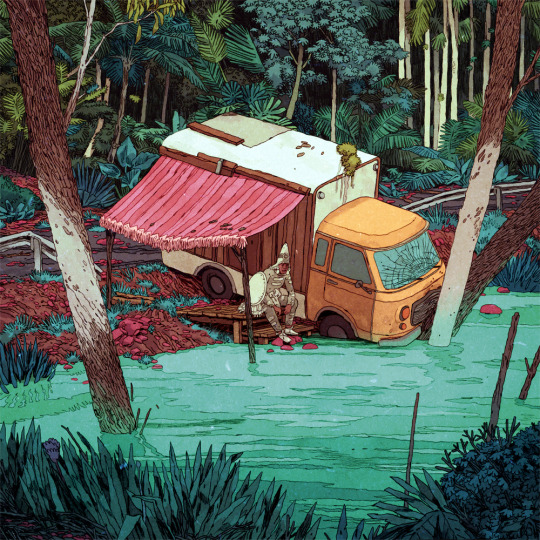


JON JUAREZ
SHOP → lama.co/harriorrihar
SOCIAL NETWORK → mas.to/@harriorrihar

3K notes
·
View notes
Text
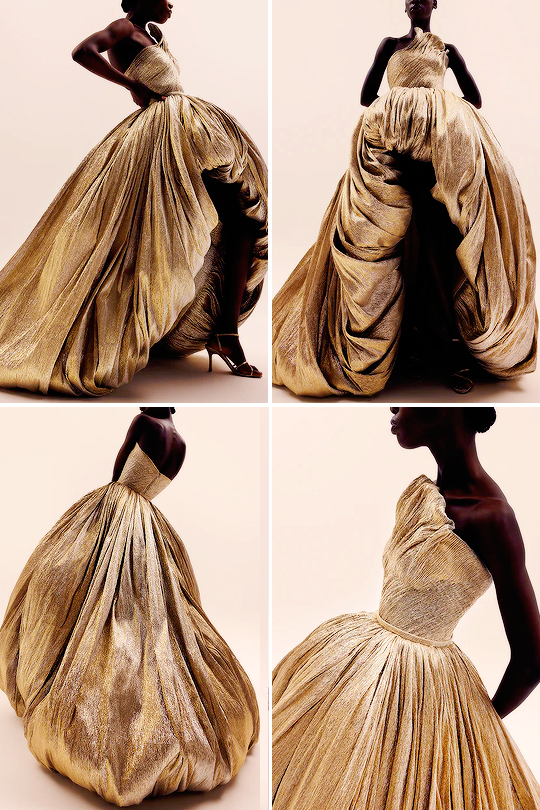
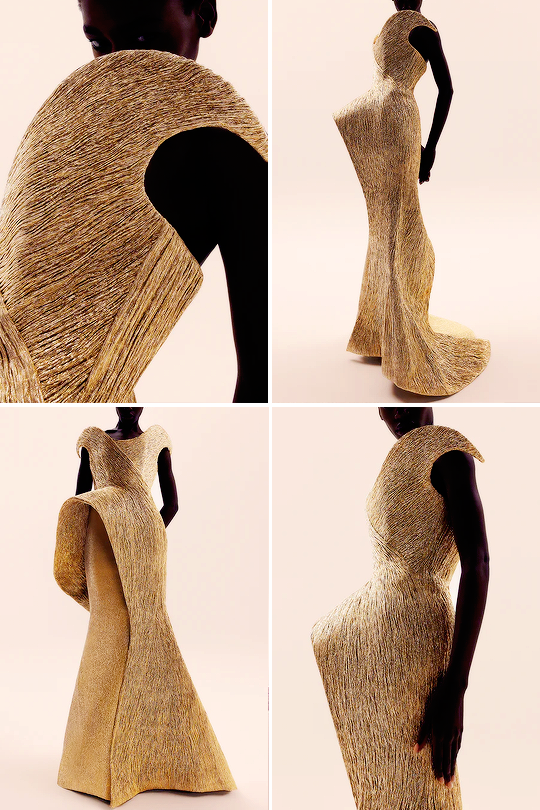
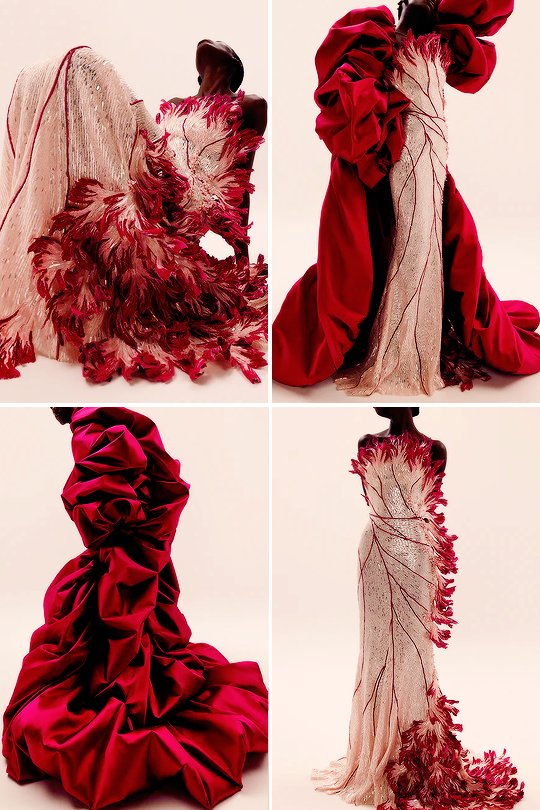
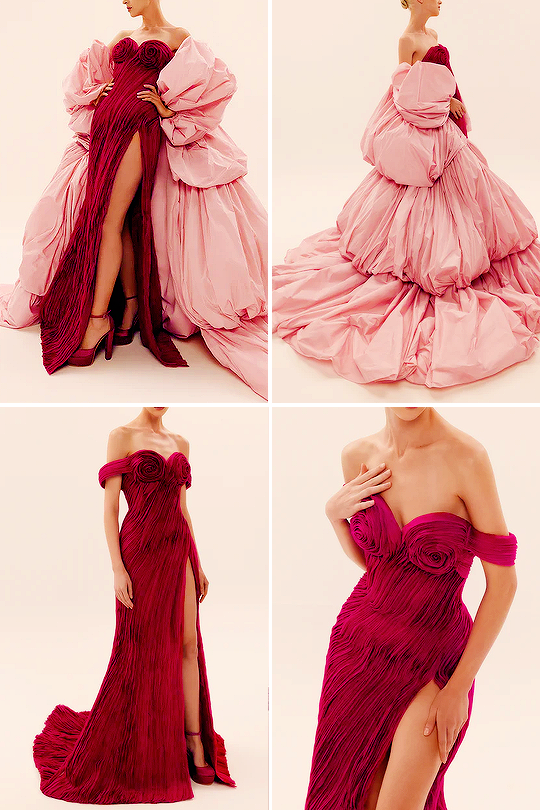
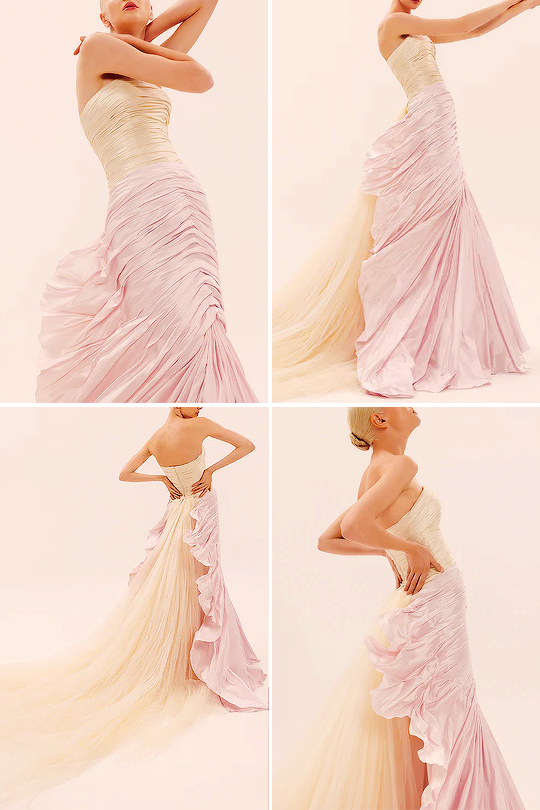
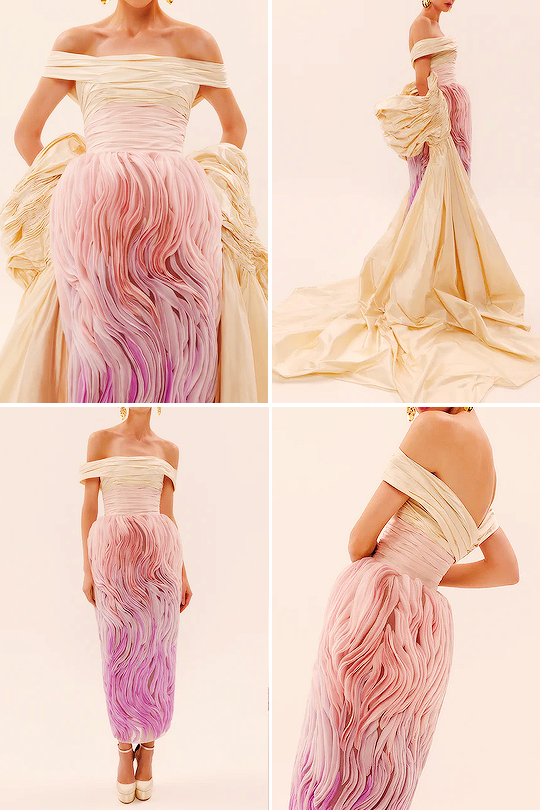
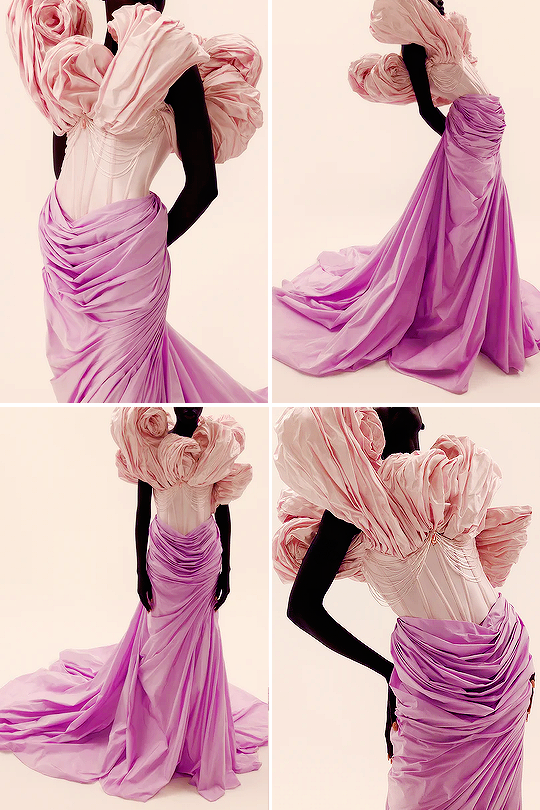
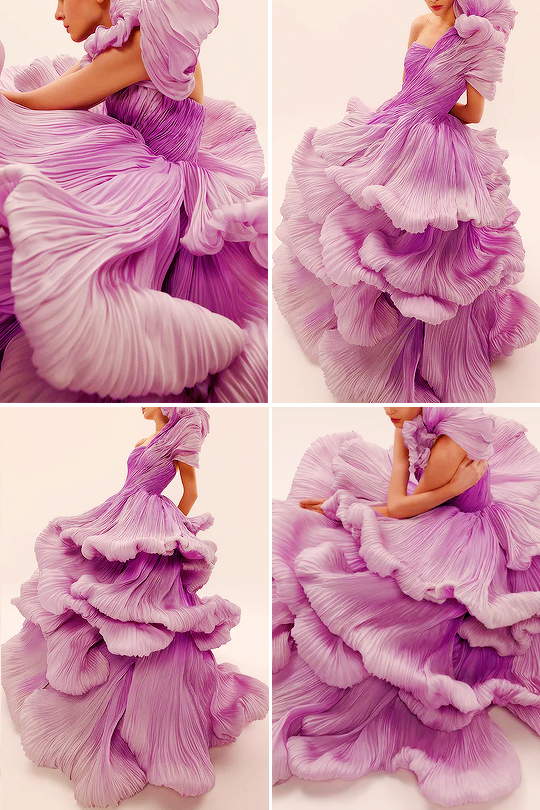


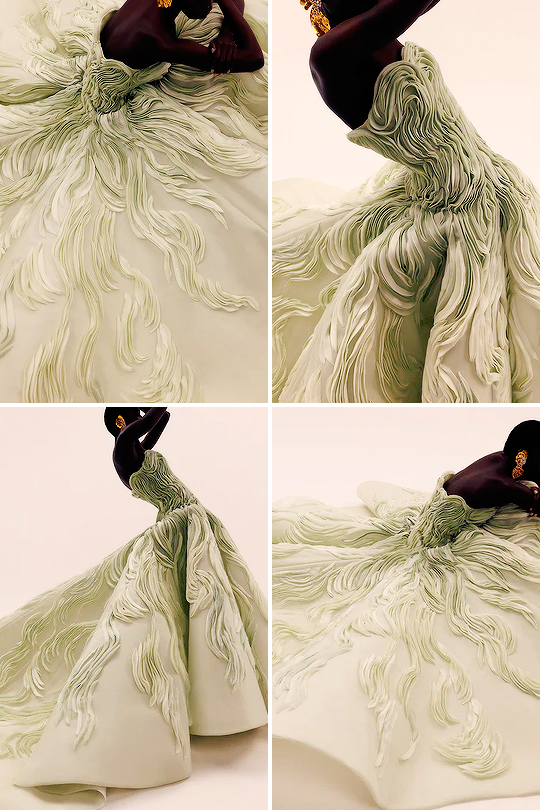
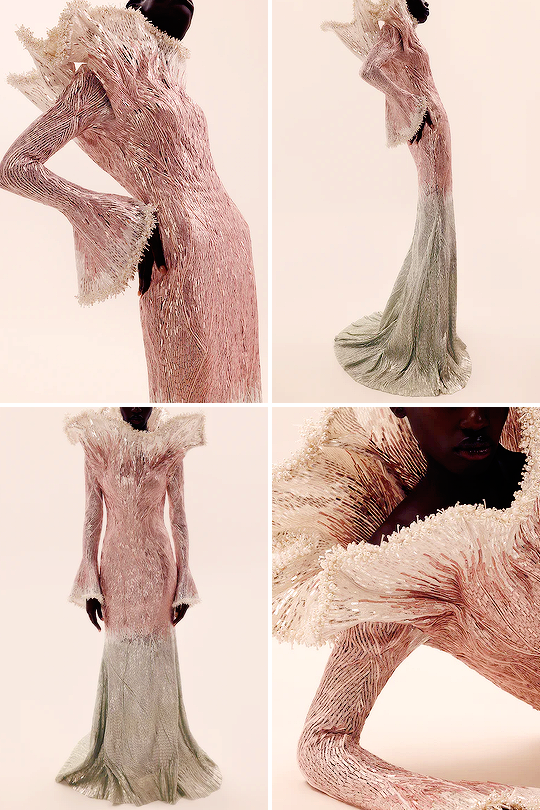
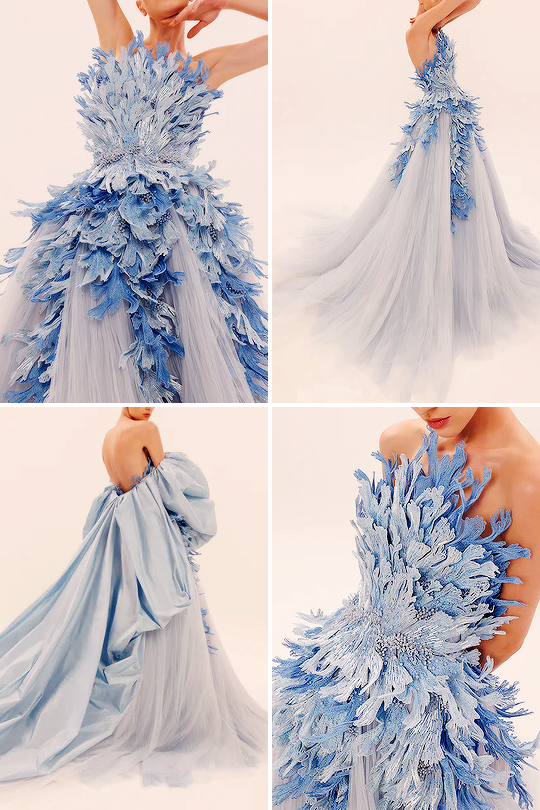

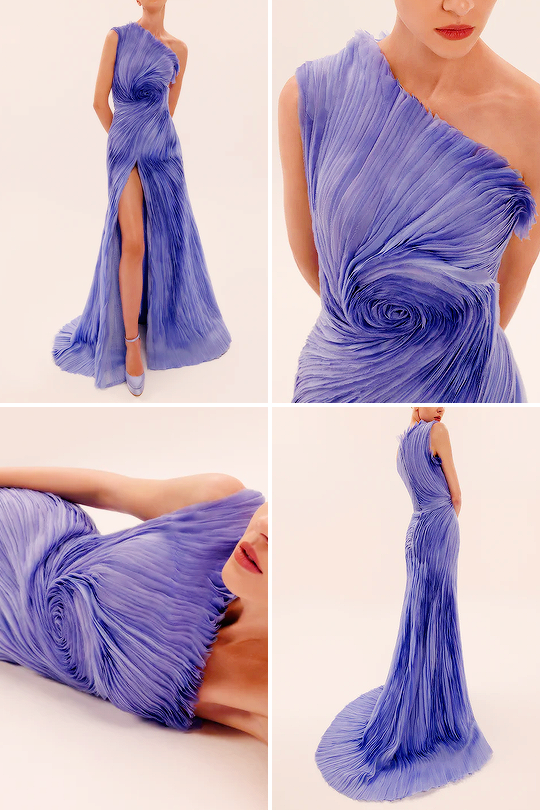

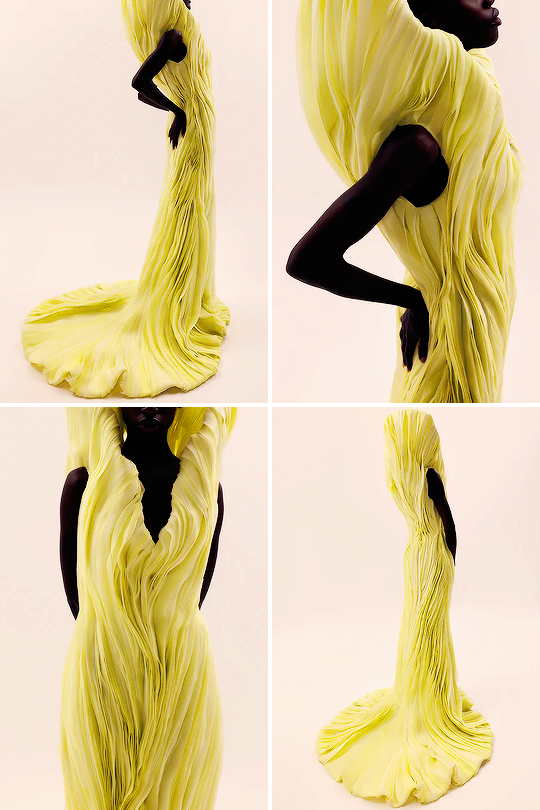
SARA MRAD 'Ripples In The Wind' Collection
if you want to support this blog consider donating to:ko-fi.com/fashionrunways
1K notes
·
View notes
Text
A surprisingly helpful bit of social maneuvering I've figured out from trial and error:
Throughout your life, you are going to need things from people. Often, it's going to be on a deadline. And when that deadline passes, you generally want to know what's going on. So, you need to ask them.
There are two kinds of people, broadly, in this situation. The Shameless will tell you what the holdup is, with absolutely no regard for if the reason is "good enough". This is actually very helpful, because you get the real reason immediately, and can start working on a solution.
The Ashamed is trickier. People who are Ashamed are people who were often told they were giving excuses when they were trying to explain, and they'll often avoid you until they solve the problem on their own. This causes them and you a lot of stress, and often takes a lot longer to solve.
Long term, the strategy for dealing with people who are Ashamed is to provide a supportive environment where they're comfortable sharing any problems they're having with getting things done. But, there's a way to at least partially short-circuit that:
Provide an explanation for them.
One example might be "Hey Susan, I noticed that I don't have your report yet. Are you busy with other projects?" The readymade explanation signals that you're willing to accept an explanation, which is the big anxiety point.
Sometimes, you still won't get an honest answer- especially if the honest answer isn't "good enough" by the standards of the person who traumatized them. But, I've found that it often at least gets you a lie that lets you give them some slack or work around the problem.
Let's say that Susan has actually completely forgotten that she needed to do the report. She's horrified at herself, and completely unwilling to admit the real problem. But, she can now safely reply with "Sorry Jennifer, I've been swamped, and it got lost in the mix. I can have it to you in two days. Does that work?"
From there, so long as Susan gave an estimate for when she can actually do it, she and Jennifer can hash out a solution.
It's not a perfect solution, but it works astonishingly well for how small of a change it is.
18K notes
·
View notes
Text
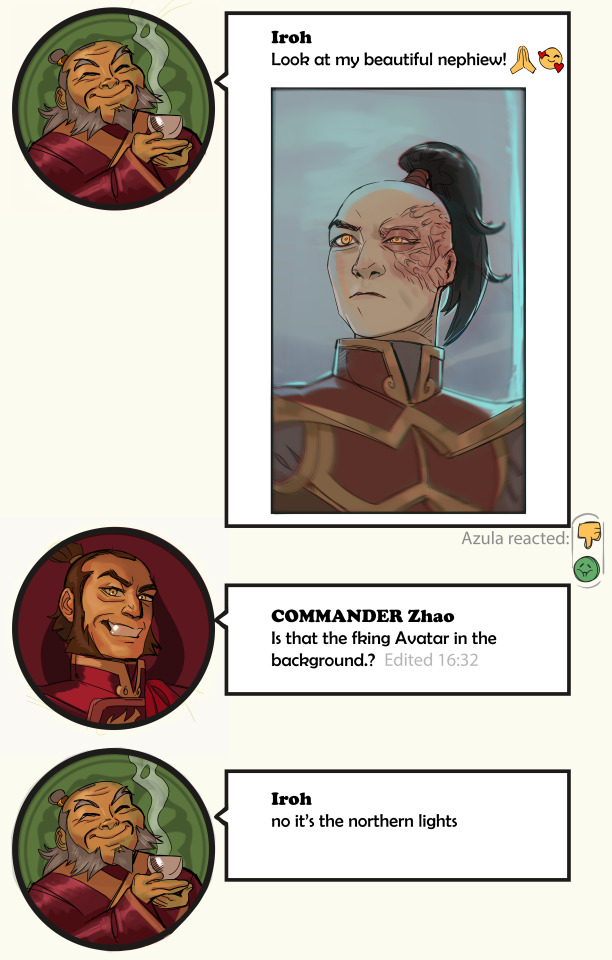
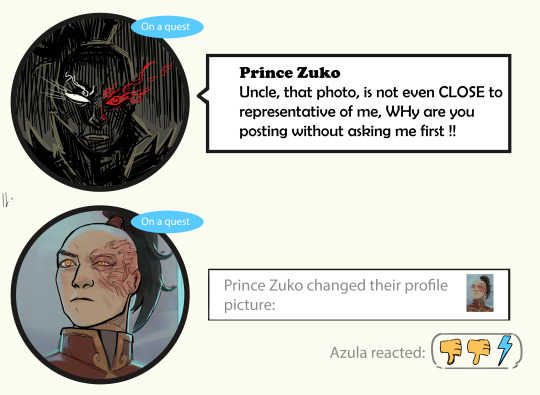
This is continuation of this thread with great ideas that inspired the art: Post
Zuko hasn't (yet??) blocked Azula, not even temporarily
Iroh's photo is blurry because OF COURSE
Zhao keeps editing his stuff
I debated placing "Ozai: Seen" but it turns out he probably wouldn't even be looking at this social media
Please help me name this lame Fire Nation social media for boomers
Zuko's "On a quest" status is pure copium
9K notes
·
View notes
Text
I will be honest guys, the Red portrait of king Charles is gorgeous asdfghjkl
it's a bad portrait. Like. Objectively. It does the opposite of what's intended. It looks like the painter is insulting him. If it was in a contemporary gallery with no context you would see it immediately as the ambivalent criticism of Charles's reign, how he fades into the overwhelming red background as a tiny little figure, small and insignificant, insufficient for the clothes he's wearing. It reminds my of Goya's portraits, how they were so 'realistic' that they ended up making these great figures look pathetic to the viewer. So these are our rulers?
the sheer novelty. the surprise and shock, the kinda cunt it's serving for no reason. I. I love it. It's an incredible portrait by Jonathan Yeo. By the sheer fact that Charles, the man, is impossible to portray as greater than man because he's just such a nothingburger of a dude. So a portrait made to make him look huge and interesting made him be swallowed in red brushstrokes. The butterfly, that reminded me immediately of " we will all laugh at guilded butterflies", draws more attention than him. It looks like an omen. It looks like a warning in all this red. Something is not right here.
This is the best royal portrait ever 10/10
85K notes
·
View notes
Text
All throughout childhood, while my peers were socializing and making friends, I studied the blade read so many books that I am now almost legally blind, which left me with vast and deeply instinctual understanding of English grammar - and next to no ability to explain how it actually works. Friends will often ask me to proofread their writing and then get very mad when I say things like, "You need to completely reverse this sentence and cut this clause entirely; no, I'm sorry, i don't know why, I just know that the way it is now ITCHES 😭"
Now, what I want to see is a fantasy story where this plays out with MAGICAL grammar. Someone from a backwater town deeply steeped in folk magic arrives at Wizard Uni where all their fellow students are like "What do you mean, we should add another '𝞯∘⋇𝞿' to the incancation because it 'sounds better'? What do you mean, 'it could just be a regional thing'?? WHAT DO YOU MEAN, 'THIS SPELL JUST FEELS LIKE IT NEEDS A LIVE RAT'????"
32K notes
·
View notes
Text
39K notes
·
View notes

